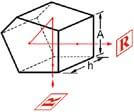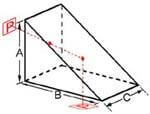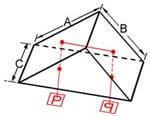A prism is a solid glass object with a specific geometric shape designed to disperse, deviate, rotate, or displace a beam of light. A micro prism, as the name suggests, is a very small version of an optical prism. Though there are many types of prisms, micro prisms are generally used to direct light in fiber optic communications, particularly in optical switches. Two types of micro prisms prove useful for these and other applications.
Micro prisms provide an efficient way to change a beam of light’s directory inside an assembly or fiber optic device. When light passes through one of the faces of the prism, it is refracted. Depending on the design of the prism, the light may be directed at various angles before exiting. The main purpose of a micro prism in fiber optics is to direct beams of light from one optical channel to another with high precision. Although micro prisms are small, they offer several significant advantages to the optics projects that use them, including:
All these benefits make a micro prism ideal for use as a circulator, interleaver or MEMS in fiber optic applications.
| General Specifications | |
| Material: BK7 Grade A optical glass, Corning Fused Silica 7980, JGS1, JGS2 | |
| 90 degree Deviation Tolerance: | Standard series: < 5 arc seconds |
| Precision series: <2 arc seconds | |
| Flatness: | Standard series: l/4 l at 632.8 nm |
| Precision series: l/8 l at 632.8 nm | |
| Reflectivity: R > 95% per face from @1550 nm | |
| Surface Quality: 40-20 scratch and dig | |
| Working Wavelength: 1310, 1550, 1590 nm | |

| General Specifications |
| Dimension Tolerance: +0.0, -0.1 mm |
| Clear Aperture: > 90% |
| Flatness: l/2 l@632.8 nm |
| Surface Quality: 40-20 scratch and dig |
| Reflectivity: R>95% per face @ center wavelength |
| Working Wavelength: 1310, 1550, 1590 mm |
| Bevel: 0.1 mm to 0.2 mm |


A micro prism’s performance is closely tied to its design and manufacturing. In general, micro prisms are cut and ground from optical glass, polished to meet precise specifications, coated (if needed), and checked for defects. At Shanghai Optics, we produce both coated and uncoated micro prisms, depending on the customer’s needs.
Though these prisms feature different shapes, they share many of the same physical properties, including reflectivity, surface quality, and working wavelength. Shanghai Optics can produce custom micro prisms using a variety of materials and coatings, including coatings for different UV, visible, and IR wavelengths upon request.
Right-angle and penta micro prisms have numerous applications in fiber optics and beyond. Many of these applications require prisms that are tailored to unique specifications and fine-tuned for optimal performance. At Shanghai Optics, we manufacture micro prisms that meet both of these requirements. To ensure that our custom optical switch prisms meet your specifications, our production staff adheres to ISO 9001 standards and uses state-of-the-art metrology equipment to test performance. See how we can assist with your current optics project by requesting a quote or contacting one of our friendly representatives for more information.